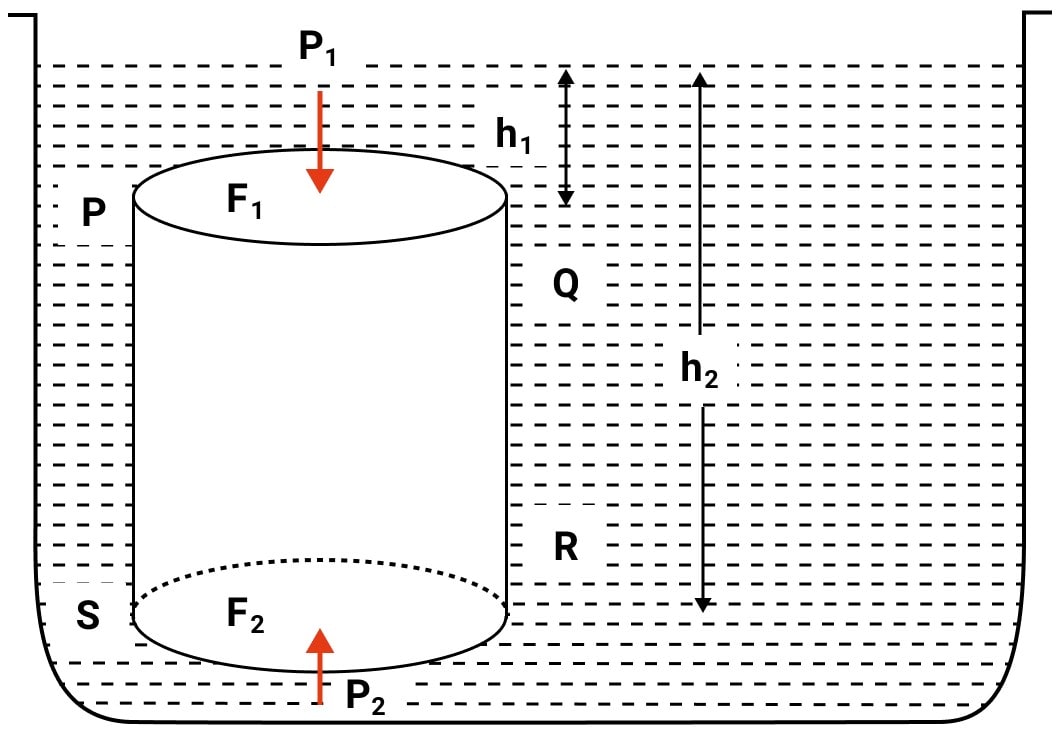Physics
The correct relation for upthrust on a solid of volume V immersed in a liquid of density ρ is :
FB =
Fg =
FB = Vρg
Fg =
Fluids Upthrust
20 Likes
Answer
FB = Vρg
Reason —

Resultant upward thrust on the body
FB = F2 – F2
= h2ρgA - h2ρgA
= A(h2 - h1)ρg
But, A(h2 - h1) = V, the volume of the body submerged in the liquid.
∴ Upthrust FB = Vρg
Answered By
9 Likes
Related Questions
Which of the following are the correct characteristic properties of upthrust ?
(i) the smaller the volume of a body submerged in a liquid, the smaller is the upthrust
(ii) the upthrust acts on the body in an upward direction at the centre of buoyancy
(iii) for the same volume of a body inside a fluid, the less the density of the fluid, greater will be the upthrust
- (i) & (ii)
- (i) & (iii)
- (ii) & (iii)
- (i), (ii) & (iii)
The S.I. unit of upthrust is:
- Pa
- N
- kg
- kg m2
Archimedes' principle applies on :
- solids and liquids
- liquids and gases
- solids and gases
- solids, liquids and gases
If a body is completely immersed in a liquid, the volume of the liquid displaced will be …………… its own volume and the upthrust will be ……………
- less than, minimum
- equal to, minimum
- more than, maximum
- equal to, maximum